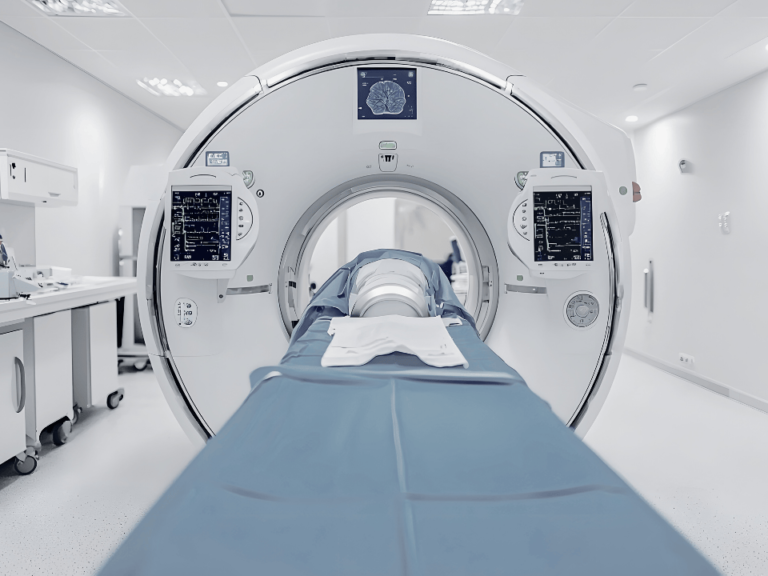Our investigative story this week is an outgrowth of a correction.
Last summer, Monmouth Medical Center, a 500-bed hospital within the RWJBarnabas Health system, came to The Cancer Letter’s attention when a breast surgeon there used a da Vinci robot to perform robotic nipple-sparing mastectomies on two patients, a woman with invasive breast cancer and a man with abnormal growth in his breast.
An April 5 story—reported and written by Matthew Bin Han Ong—was an installment is his years-long investigation of minimally invasive surgery, which includes power morcellation, laparoscopic procedures and robotic surgery (The Cancer Letter, How Medical Devices Do Harm).
The Monmouth story was worth doing, because minimally invasive technology often proliferated based on studies that didn’t consider long-term cancer-related endpoints. Now, we see that while patents show short-term satisfaction with their minimally invasive surgeries, there are also reports of diminished survival in some settings, when compared to more conventional techniques (The Cancer Letter, Nov 2, 2018).
After hearing about robotically-assisted mastectomies at Monmouth and seeing local news reports, Ong wanted to know whether the surgeon, Stephen A. Chagares, performed these surgeries off-label. Did he have IRB approval? Did he have a protocol? If so, what was the architecture of the study? Was FDA asked to issue an Investigational Device Exemption?
In Ong’s view—and in my view as the editor—that story had merit, regardless of the answers we received. We could segue from Chagares to an even more interesting set of questions about efforts to test robotic mastectomies in randomized trials, including one multi-institution study led by MD Anderson Cancer Center, and budding plans at the University of Pennsylvania. Also, we could explore why another top-tier institution—Memorial Sloan Kettering Cancer Center—has no plans to offer or study the procedure.
Why are surgeons experimenting with this equipment to perform mastectomies? Is it safe for the treatment or prevention of cancer? Is this a solution in search of a problem? How is FDA regulating this indication? Which endpoints and how much follow-up does the agency require to support issuance or expansion of a device’s label?
Ong spent about seven months working on the robotic mastectomy segment of his series. Monmouth Medical Center officials didn’t respond substantively to his questions, but in the process, he found a source who was clearly knowledgeable about the robotic mastectomies that were performed at the New Jersey hospital.
Of course, it would have been preferable to get answers on-record, but our job is to get information—often information people are trying to hide—and relying on sources who speak on background is a much-used tool of the trade.
The Monmouth story was worth doing, because minimally invasive technology often proliferated based on studies that didn’t consider long-term cancer-related endpoints.
The source went on background and told Ong that Chagares performed robotic mastectomy without a protocol. The source gave Ong additional information, most of it not flattering, which we didn’t use, because the story was focused on devices and surgical outcomes, not Monmouth and Chagares.
I know the name of the source Ong relied on, and—based on information we later obtained—I have no doubt that the source was privy to information about Chagares’s study. We confirmed this source’s account with other confidential sources, but at Monmouth we didn’t have the depth of connections we have at top-tier academic institutions. I was involved in the vetting, and I was unable to catch the incorrect information.
After the story was published, we received a miffed email from Chagares, who informed us that, contrary to our report, he had a protocol that was approved by Monmouth’s IRB. We have since obtained internal documents and emails confirming that the protocol was designed to collect satisfaction data as well as cancer-related outcomes data associated with the robotic mastectomies at Monmouth.
It was not an impressive protocol. It wasn’t designed to test safety and efficacy, and sections of it were cut out of a randomized trial led by a group in Italy and scotch-taped together by the Monmouth IRB. But it did receive the board’s final blessing. Chagares was clearly telling the truth.
I have been a reporter for about 40 years without ever encountering a situation where a source to whom I offered confidentiality used this protection to tell me something that wasn’t true.
I made two decisions:
(1) I decided that we will continue to honor our commitment to keep the source’s confidentiality, even though the arrangement in this case went awry. However, one bad episode in four decades is a pretty good success rate. Generally, the benefits of confidential communication with sources outweigh the potential harms of a confidential source using this privilege to plant disinformation.
(2) After learning that we had relied on incorrect information, I decided to keep Ong’s story package intact, instead annotating it to show what we have learned since.
You might call this a Bayesian correction. The Monmouth imbroglio was now a part of the story. We decided to keep digging, with me doing some of the reporting. We would take advantage of what we learned and change the course of the investigation accordingly.
The internal documents we obtained portray Chagares as a busy surgeon who fully trusts Monmouth’s IRB to guide him away from the cliffs. He plays by the rules, even as the IRB spectacularly botches the study design, informed consent forms, and the conduct of the study. He stays silent even as hospital officials place a moratorium on the procedure without telling him what their “safety concerns” were.
Had Chagares disregarded the hospital’s directives and spoken with Ong as he reported the initial story, that story would have been different. There would have been no corrigendum—or this investigative piece.
After annotating Ong’s initial story, on April 7 and 8, we submitted 32 questions to top officials at Monmouth Medical Center. On May 30, we submitted another set of 32 questions.
Too often, journalists go away after being blown off by institutions that are engaged in unsavory behavior. The Cancer Letter doesn’t go away. And—this is a heads up to the folks at Monmouth Medical Center—we aren’t done.
Can another cancer protocol as misguided as this one be approved by the Monmouth IRB? Probably not, because going forward, all cancer-related clinical trials in the RWJBarnabas Health system are required to go through scientific and feasibility review at Rutgers Cancer Institute of New Jersey prior to IRB review.
And yet, there is no such thing as a trivial failure to protect patients from unreasonable research risks and unethical conduct. Every IRB failure—and this is a big IRB failure—is an opportunity to learn.
The Cancer Letter will be here to monitor this learning process.











